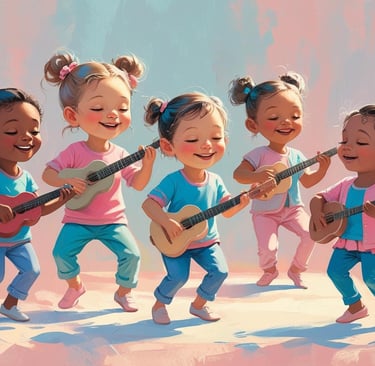The Role of Rhythm and Melody in Early Childhood Education
See how rhythm and melody build memory, focus, and creativity in young learners.
Tunezeez
9/23/20251 min read


Walk into any preschool, and you’ll hear music. That’s because rhythm and melody are more than fun—they’re essential tools in early education.
Rhythm Builds Structure
Clapping games, chants, and rhythmic songs help children understand timing, counting, and sequencing. These are the foundations of math and logical thinking.
Melody Sparks Imagination
Melody opens the door to creativity. When children sing, they use imagination, storytelling, and emotional expression—all vital for healthy growth.
Music as a Bridge
Songs help transition between activities in classrooms, making routines smoother. A cleanup song, for example, transforms a chore into a fun moment.
Personalized Learning
When songs include a child’s name or personal details, attention and focus increase. Learning becomes more relatable and memorable.
Conclusion
Rhythm and melody are not just about music—they shape memory, focus, and creativity. At Tunezeez, we bring rhythm, melody, and personal touch together to create songs that support your child’s educational journey.
Tunezeez
Big tunes for small ears
Request a song
Listen to our music
© 2025. All rights reserved.